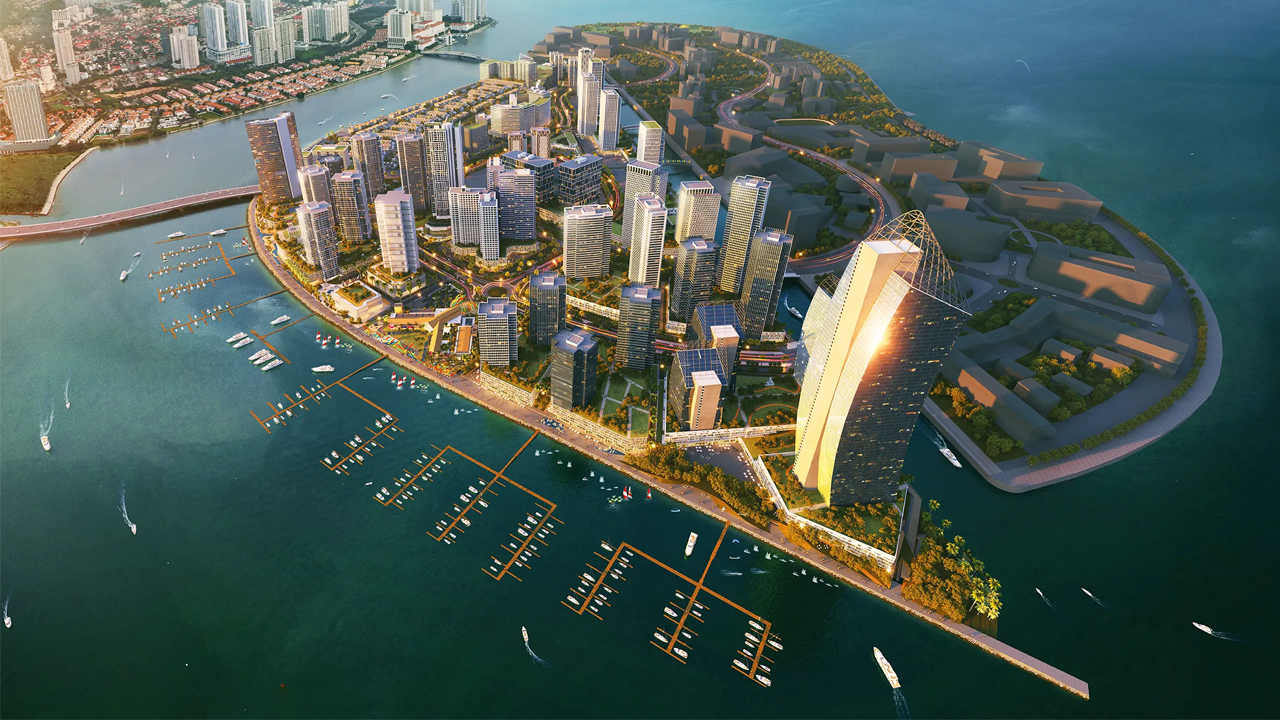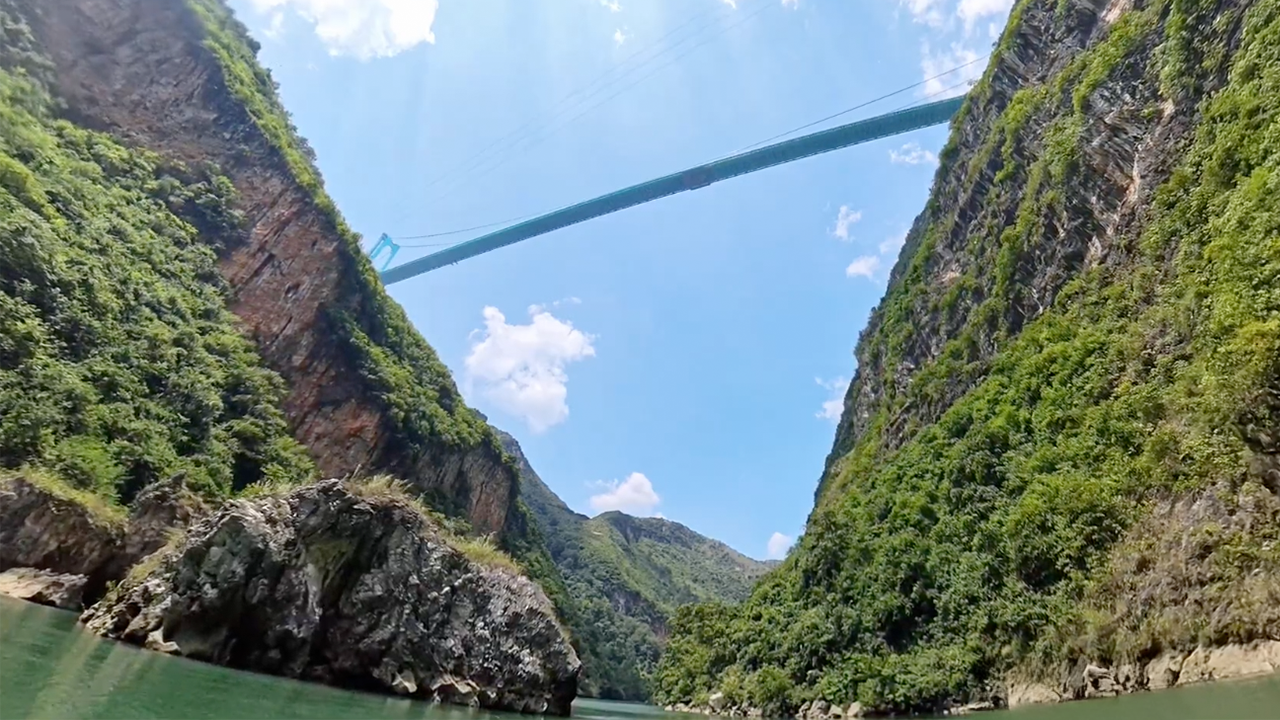Sydney's $5BN Mega-Airport
- Youtube Views 1,267,715 VIDEO VIEWS
Video narrated and hosted by Fred Mills. This video contains paid promotion for Masterworks.
Sydney’s one of the most popular cities in the Southern Hemisphere.
It’s home to the revered Sydney Opera House, the beautiful Harbour Bridge and the famous Bondi Beach.
Nearly 40 million people travelled through the Harbour City’s main airport last year.
And can you blame them? The good news for Tourism Australia is that more and more people are expected to travel to and from Sydney in the coming years - double the number in fact.
The city’s overall population could climb from 5 million to 7 million people. It all points to a city doing pretty well for itself but there’s a rather alarming catch.
Sydney Airport can’t cope.
And with the threat of serious overwhelm at the city’s biggest aviation port, a big, expensive fix to the problem is currently under construction.
And it’s haunted political debates in Sydney since the 1940s.
Say hello to Western Sydney Airport. $5.3 billion Australian - or roughly $3.6 billion US - dollars worth of brand spanking new terminal, check-in desks and landing strip. And while its promise of 24/7 travel has commercial appeal, that isn’t landing with nearby residents.

Above: Western Sydney Airport is currently under construction. Image courtesy of Western Sydney Airport.
But with the city in desperate need of help, is this multi-billion dollar development really the answer and can it rescue Australia from an aviation nightmare?
Sydney’s air travel problem
Sydney Airport is a true veteran. Founded in 1919, it’s one of the oldest in the world. And its hangars have had a bit more than just a lick of paint since the early 1900s.
There have been several renovations over the years: notably, $425 million was thrown at increasing capacity in the lead up to the 2000 Sydney Olympics.
The existing terminals were extended and refurbished and new rail tunnels were constructed using a tunnel boring machine.
Now, while this was going on, as the city’s key airport, it couldn’t just shut down for the work to be completed. The answer? The development of a composite steel and concrete structural scheme. It meant installation was quicker, it limited time on site and there was less need for towering cranes.
It’s clear various challenges have been navigated at Sydney Airport over the years through renovations.
But there’s a pretty significant, limiting factor.
On one side is Botany Bay. The remainder of the footprint is surrounded by housing thanks to the suburbs of Mascot, Marrickville, Wolli Creek and Kyeemagh.
There’s no room for expansion and all that housing leads to flight path issues. Residents living nearby weren’t impressed with jets over their homes at all-hours and so much like a teenager with school in the morning, the airport now has a curfew every night from 11pm to 6am, thanks to an act passed in 1995.

Above: Sydney Airport is surrounded by suburbs and Botany Bay. Image courtesy of Aerometrex.
The problem is that overnight flights are becoming pretty industry standard for a lot of major operators. Without metaphorically flipping the bird to the nearby suburbs, Sydney Airport is kind of stuck between the sea and a hard place.
It’s nearing capacity, meaning without help, Sydney's aviation dilemma is only set to get worse.
Constructing Western Sydney Airport
Thankfully, there’s an answer to the city’s air travel problems: Western Sydney Airport, known as WSI or Nancy-Bird Walton after the pioneering Australian aviator.
It’s located about 30 miles west of the city’s central business district and Sydney Airport and eventually it’ll welcome a staggering 82 million visitors a year.
But before that can happen, construction needs to be finished. And can you believe some of the first workers on site in 2018 turned up purely for food and a good time?
Herds of sheep and cattle were needed to help clear the nearly 1,800 hectares of bushland - a site twice the size of Sydney Airport.
This has been one of the biggest earthmoving projects in Australia’s history. 26 million cubic metres of soil and rock have been shifted to level the site, using 300 pieces of machinery.
With all that hard graft out of the way, the fun bit could begin. Contactors started laying the runway, taxiways and apron areas. It’s obviously crucial the infrastructure can withstand the load, with planes full of people landing and taking off here from 2026.
It’s why 4.5 million tonnes of high-quality crushed sandstone has been laid under the surface to provide a stable foundation.
The runway itself is 3.7km long and in time, a second runway of the same size will be added. It’ll run parallel on the other side of the terminal.
There’ll be no need for an intersecting path either. The winds here have been tracked for decades and it was decided, because they’re so predictable, they’re not likely to cause many issues.
The terminal building itself spans four levels, spread across 110,000 square metres. It’s a bit of a unicorn, as is the whole site. Constructed from the ground up, it’s the first airport to be built on a greenfield site in Australia for over 50 years.

Above: The terminal at Western Sydney Airport spans four levels, spread across 110,000 square metres. Image courtesy of Western Sydney Airport.
It’s covered by an aluminium box section ceiling, treated to look like timber. and follows the curves and undulates to the actual angles of the Blue Mountains. It also uses light filtration, inspired by the Australian bush, to mimic the experience of standing underneath a eucalyptus tree canopy.
Manos Sartzetakis, is the Project Director for Multiplex, a contractor on the WSI project. He says the angles for the ceiling were created using a spine:
“There’s a central spine and the blades are spaced diagrammatically so you get natural light through the skylights above the slatted ceiling.”
There are then catwalks above that to allow for maintenance, changing of lights and servicing throughout the ceiling space.
A step up from there the outer roof is made up of 3,500 tonnes of fabricated steel and more than 44,000 square metres of sheet metal. Usually that’d mean a lot of joints from which pesky leaks can crop up. But not here. Two of the largest sheets of their kind in Australia, at 75 metres long, were rolled on site and hoisted up using a custom lifting frame.
“The logistics involved with lifting a 75-metre sheet, using a spreader beam, the exclusion zones associated with it, the engineering of the spreader beam which is actually supporting the sheet in a temporary case, so it doesn’t flex while it’s being craned into position, taking into account the crane loads, the wind loads and associated impacts for that sheeting was quite a challenge,” said Manos Sartzetakis.
On top of those impressive sheets, the roof is topped out with 6,000 solar panels to help power the terminal and wider infrastructure.
In time, that’ll include a metro terminal link. A new 23km line is being constructed as part of a major overhaul of travel in the city. There’ll be six stops, connecting Western Sydney to its new airport. In time, that’ll then connect to existing services stretching far and wide.
This is just the start
All of this contributes to a city on the up and its newest airport is part of the party, now more than 80% complete. But that’s just stage 1.
The site will see major expansion moving forwards. The terminal building will be developed further, additional parking added, more space created for airlines to dock and that second runway.
The way fuel is directed to the site is being investigated too. As things stand, it’s being ferried about by good old-fashioned trucks. But in the future, we could see a dedicated fuel line set up for Western Sydney.

Above: A render depicting how the Western Sydney Airport site could look once each stage of development is completed. Image courtesy of Western Sydney Airport.
All of this will come but patience is needed. Going hell for leather and doing it all at once risks opening a huge travel port ready for nearly 100 million people, but with demand starting at only 10 million. And that would become extortionate.
Of course, a flashy new airport of this size will never sit well with everyone. Western Sydney Airport will operate 24/7 and residents nearby have voiced concerns over the potential flight paths.
There are worries about the world heritage status of the Blue Mountains too, something the WSI team has responded to on the airport’s website:
‘The Blue Mountains received World Heritage Status in 2000, when plans for Western Sydney International were well advanced, which means the status was awarded knowing that the Airport was likely to be built. The Australian Government is continuing to keep UNESCO informed about the Airport’s development and potential impacts. At this stage there is no suggestion that the Airport will impact the Blue Mountain’s status.’
Those aerial routes aren’t confirmed yet, so we’ll have to wait and see what happens. In the meantime, construction will plough on. A plane has landed on the runway for the first time and further tests will continue over the next year and a half.
While with each passing day we’re nearing a grand opening, it’s been a long and expensive journey to get here.
“We’ve got Multiplex crane drivers in their 50s who grew up hearing about an airport here. Many didn’t believe that one day they’d be living in times where it was built and the next thing, they’re a crane driver on the project,” said Manos Sartzetakis.
The Badgerys Creek site was proposed all the way back in 1986. It wasn’t until it was put forward again 28 years later that it was finally given the green light.
But massive strides have been made. A first international operator, Singapore Airlines, has agreed a deal to fly to and from WSI.
And after a lifetime of waiting, Sydney’s hero is nearly here - the answer to its aviation nightmare.
This video and article contain paid promotion for Masterworks, you can skip their waitlist here.
Video narrated and hosted by Fred Mills. Additional footage and images courtesy of Western Sydney Airport, Colin Dobson, AP Archive, Cordell Jigsaw Productions, Dan Freeman, Josh Withers, Martyna Bober, Jamie Davies, 9News Australia, Aerometrex, J-Bar / CC BY-SA 3.0, Phillip Capper / CC BY 2.0, David Syphers, Tambo / CC BY-SA 3.0, MDRX / CC BY-SA 4.0, Multiplex Construction, Guardian News, 7NEWS Australia.
We welcome you sharing our content to inspire others, but please be nice and play by our rules.








